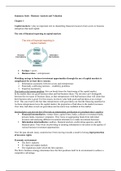Samenvatting
Extensive but clear summary - Business Analysis and Valuation, ISBN: 9781473722651 Business Analysis and Valuation (BKBMIN053)
- Instelling
- Erasmus Universiteit Rotterdam (EUR)
Extensive but includes all the subjects regarding the course Business Analysis and Valuation. No need to read the book! - Summary Book Business Analysis and Valuation: IFRS Standards Edition, Fifth Edition by Krishna Palepu, Paul M. Healy andErik Peek (Cengage Learning, ISBN Number 978-1-4737-5842-...
[Meer zien]





